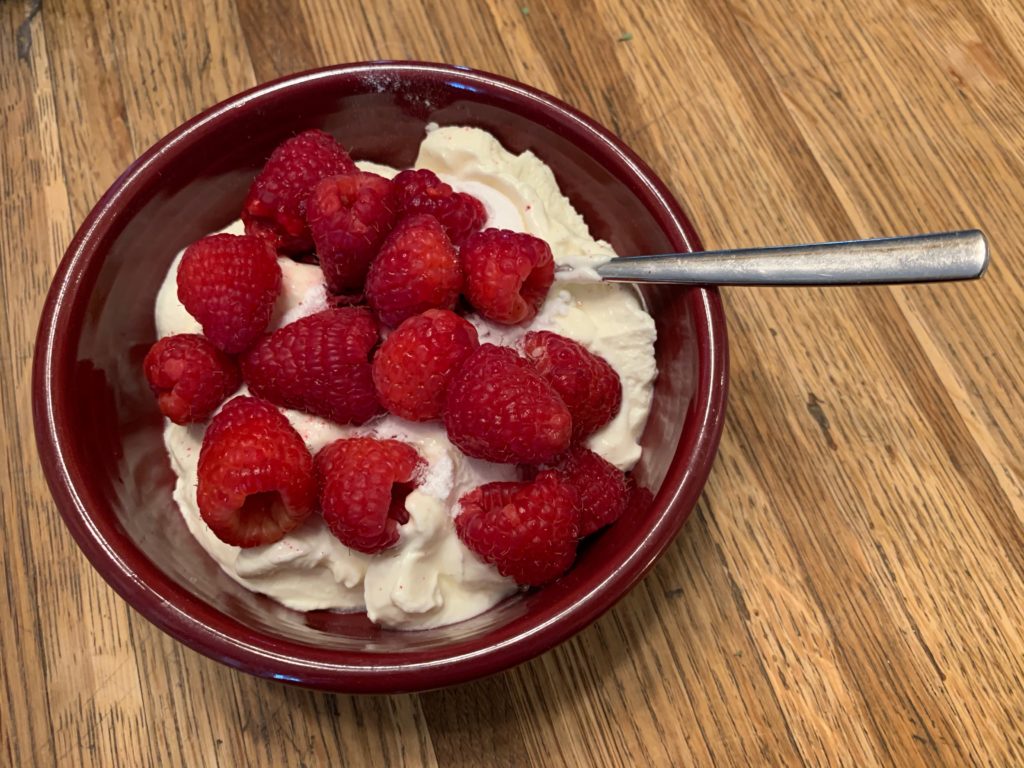Most of what Tim Ferriss recommended in his Slow-Carb diet aligns with what Lisa and I have found to be effective for weight loss and health.
I no longer eat beans daily as he suggests, and we don’t do the cheat days every week either. We have occasional pizza nights, perhaps twice a month, and we enjoy holiday meals to the fullest without guilt or regret.
One Ferris tip I’ve continued to follow to this day, however, was his suggestion to “Eat the same few meals over and over again.”
What that really means from my perspective is that I need to identify some go-to meals I can make at any time, and which I know will be satisfying.
Doing that has an extra benefit of making it a lot easier to skip meals and move toward intermittent fasting, #BodyBabyStep Four.
And because I don’t have to overthink my meal choices, I’m not spending time focused on thinking about food. That reduces temptation. I can just pick one of my standbys and know I will be satisfied.
Here are some of my favorites.
Top Choice: Scrambled Eggs
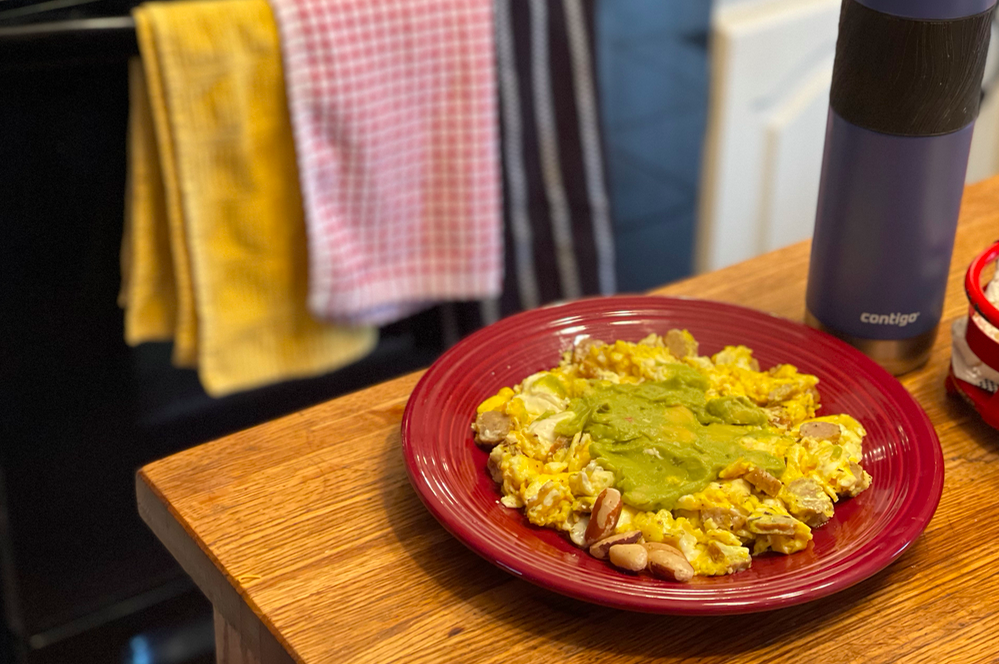
I probably have this at least five times a week. My concoction typically includes four eggs and some kind of meat (bacon, diced ham, sausage or steak) cooked in grass-fed butter or bacon grease. I usually add guacamole and a few Brazil nuts, and lately have been including cream cheese, too.
Last week for the first time I decided to count the macronutrients in this hearty meal. My estimate: 133g fat, 37g protein and 16g of carbs, but with 4g fiber that brings net carbs to 12. Total calories: 1,393, with 86% from fat, 11% protein and 3% carbs. Clearly ketogenic.
That may seem like a lot of calories in one meal, but because it is so filling it can often be my only meal of the day, and with almost no carbs I don’t get blood sugar spikes or crashes, and hence have no cravings.
Grilled Steaks or Bunless Burgers
Having a mini-Weber charcoal grill enables me to have delicious steaks year-round, even in December or January. Just add a few more coals to make up for the frigid outdoor air.
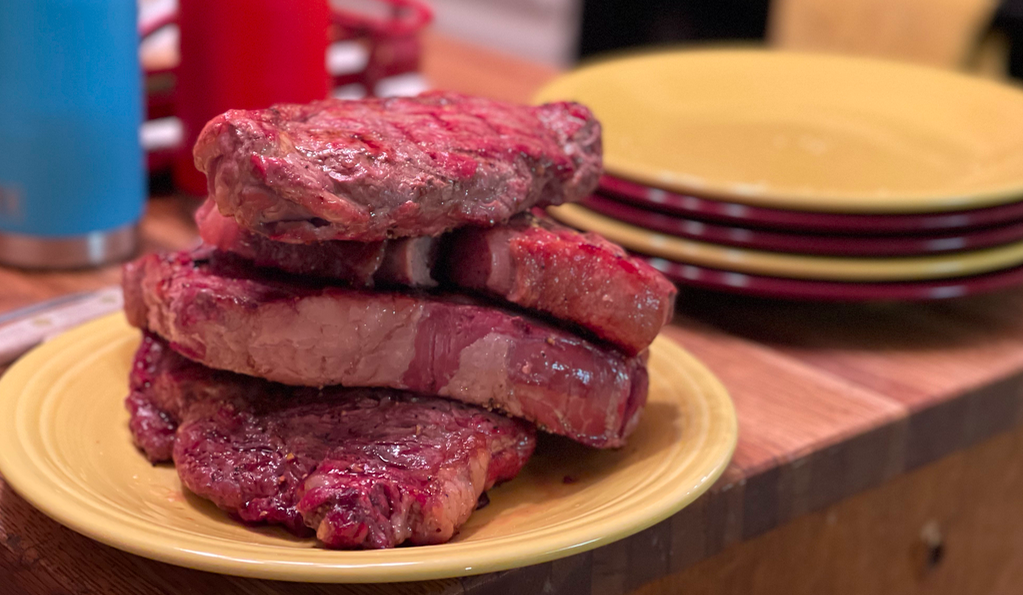
I have come to appreciate fattier cuts like ribeye, and whereas I previously would have trimmed off the fat thinking it was a healthy choice, now I do my best to eat the whole thing. Fat is our friend.
I typically grill an extra steak and then save it in the refrigerator, cutting it up to put in my eggs for the next two or three days.
For a lower-cost option, I grill four burgers with bacon and cheese, and eat two of them without a bun. I save the others to warm up for the next day’s meal, and that has the added benefit of reducing my thinking about food.
When I have steak or burgers I’ll often accompany with frozen broccoli warmed in the microwave, with grass-fed Kerrygold butter melted over it.
Beef Stroganoff
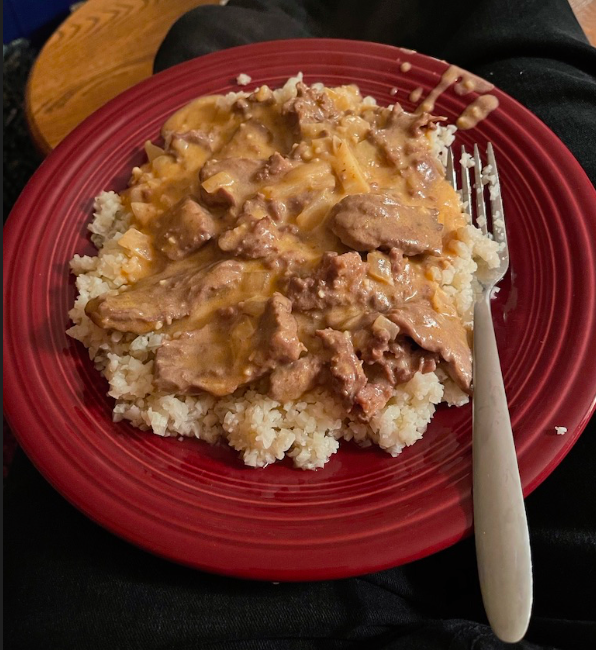
For this one I’m kind of at Lisa’s mercy, although I guess I could learn to make it. It’s my youngest son’s favorite, so she typically makes it when he’s home.
With regular rice it’s high in carbs, but riced cauliflower has a consistency I’ve come to find acceptable at least, and that keeps it ketogenic.
Other Favorites
Lisa has found these low-carb recipes and occasionally whips up a double batch that lasts us a few days. If she’s only cooking every two or three days that makes it easier for her as well, not having to be thinking about food constantly.
Being an empty-nester has its advantages!
- Salmon Chowder
- Chicken Curry Salad (leaving out the raisins)
- Baked granola made from with pecans, almonds, unsweetened coconut and raw pumpkin seeds. It’s seriously addictive.
- Meaty chili with cheese and sour cream
- Baked cheese crisps
Every week Lisa typically tries one new recipe (often from The Everyday Ketogenic Kitchen) and if we like it she adds it to our rotation.
Filling and Tasty Dessert
As part of our last meal of the day, we’ll typically have our awesome more-than-full-fat yogurt and berries. I’m in charge of making that.
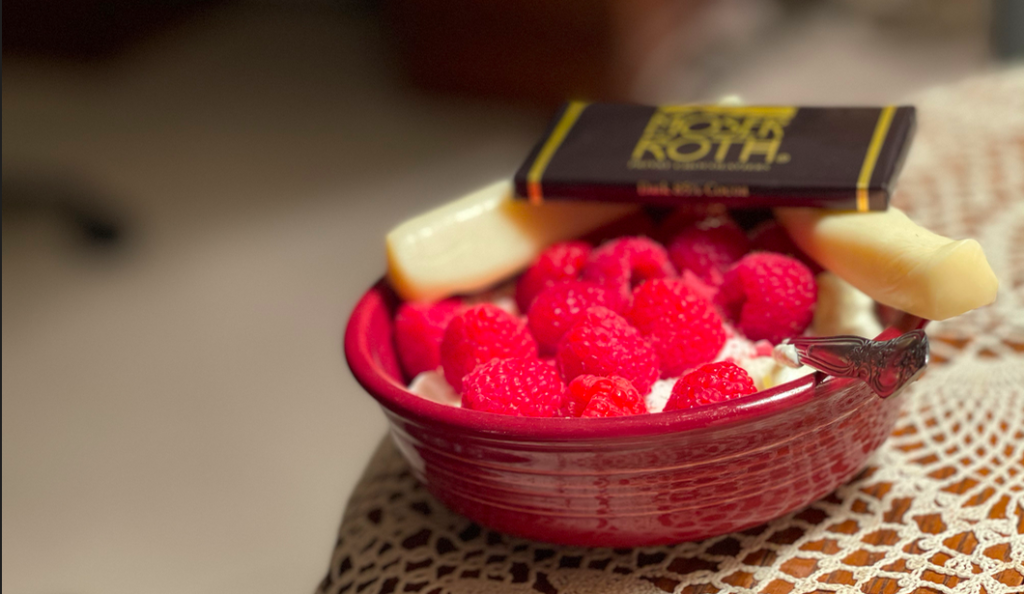
I usually have raspberries or blackberries, while Lisa prefers blueberries.
Along with the yogurt, I often have smoked string cheese and a small 85% cacao dark chocolate bar.
Lisa never has more than two meals in a day, and I rarely do.
Often we just have one, in the mid to late afternoon. My teleworking due to COVID-19 has given us more flexibility in mealtimes, enabling us to have a narrower eating window and more prolonged periods with low insulin levels.
Making it Work for You
You need to find what’s appealing to you, and that is relatively low in carbs and high in good fat. And by good fats I mean saturated and monounsaturated fats from animals, avocados, nuts and olive oil, not so-called vegetable oils, the polyunsaturated fats.
What hearty and healthy meals are your favorites? Tell us about them in the comments!
If you think your friends might find this post helpful, I hope you’ll share by email or on your social networks using the buttons below.
To get these updates on a regular basis you can subscribe by email, or follow me on Facebook, Twitter and LinkedIn, where I’ll also be posting links.
Check out My Health Journey for our full story, and my #BodyBabySteps for tips on getting started on your own health-improvement journey.

